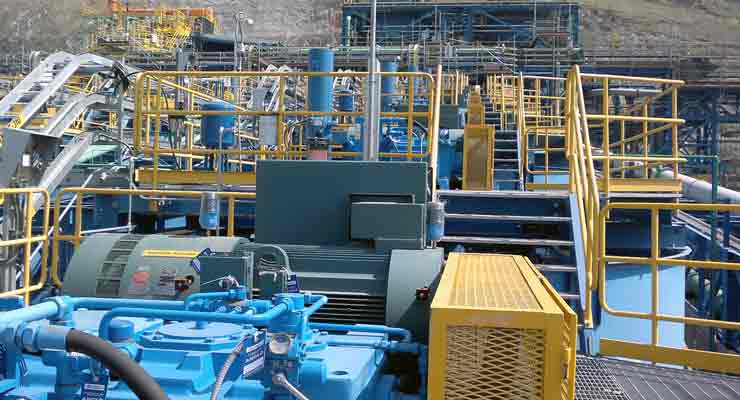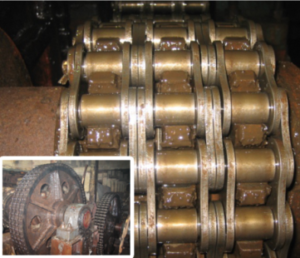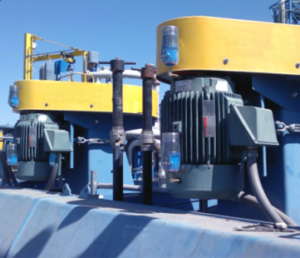
There are several factors to consider when selecting the right industrial lubricant. A manufacturer’s recommendation is a great starting point, but it doesn’t have to be the only option. Most manuals are written for ideal conditions, but these guidelines don’t address the real environment in which the equipment is being used. What if your equipment manufacturer recommends a NLGI-grade #2 grease, but you are operating in below zero conditions?
It’s best to use an industrial lubricant that meets the specific demands of your operation. There are new advancements in lubrication that could prove to be more reliable or extend equipment life further if you are willing to do the research and understand the basics.
We recommend customers understand the “4 C’s to Lubrication”:
- Correct Technology
- Correct Quantity
- Correct Frequency
- Correct Procedures
Correct Lubrication Technology
To determine which type of lubricant is best for an application, one must understand the current situation. Look at application/environmental factors such as speed, temperature, load, vibration, moisture, and dust. Consider that:
- Temperature determines lubricant base oil type
- Speed determines viscosity required (at operating temperature)
- Load, vibration, and moisture determine the additive package
There are three (3) classifications of a lubricant:
- Fluid (Liquid)
- Semi-Solid (Grease)
- Solids (Dry)
Grease, for example, is made up of an oil base stock, thickeners, and functional additives to enhance performance. There are standard base stocks such as mineral oils and standard thickeners such as lithium/ lithium complex. Greases comprised of these thickeners are lower in cost and thus frequently used, but they don’t offer the same performance as a synthetic base grease. The lubricant’s additive package has a significant impact on the lubricant’s performance.
As temperatures or speeds increase, the viscosity of a lubricant will decrease. Viscosity, the measure of a fluid’s resistance to flow, is essential to protect equipment. You need a formulation that will provide a sufficient film layer of lubrication to reduce friction.
When selecting the appropriate industrial lubricant, keep in mind the application environment. For example, if you expect a bearing will be subjected to significant amounts of water contact, then choose a lubricant with low-water washout and high-corrosion resistance properties. In situations where the bearings are at low speeds and extreme pressure, you can increase equipment reliability by choosing a higher base oil viscosity lubricant with high-load capabilities. Selecting the right lubricant in each scenario can have considerable pay-off.
Plan Ahead for Extreme Conditions
Choosing the right lubricant is even more essential if you are operating in an aggressive environment such as a mine where there is typically high moisture, corrosion, and extreme temperatures. It’s even more critical to equipment life to select a lubricant that will maintain a sufficient film of lubrication to reduce friction, resist load and wear, and prevent corrosion.
 CASE STUDY: Residue Building – Copper Ore Mining
CASE STUDY: Residue Building – Copper Ore MiningIn one of our customer’s copper ore mining operations, the chains of an apron feeder are exposed to constant moisture and dirt. Water and dust residue causes excessive wear as well as severe corrosion in the pin and bushing. Using an original lubricant, the customer needed to replace the chain links every 1-2 weeks and the entire chain every month. After switching to a lubricant with a corrosion inhibitor and extreme pressure additives, the chain life doubled. The new lubricant was able to penetrate the pin and bushing and keep the chains well lubricated and corrosion free. It also reduced debris buildup. Primary crusher production rates increased by 30%, and the company saved $40k US annually.
Correct Lubrication Quantity and Frequency
It’s important to understand the damage that over or under greasing can cause your equipment. Manually re-greasing too often and/or with the incorrect amount, or automatically lubricating with the incorrect lubricant can cause harm. Whether you choose an automated system or manual, the goal should be to provide the right type of lubricant, in the right amount, at the right time. This approach allows for a constant level of protection.
Frequent bearing failure is a prime example of damage caused by over or under greasing. According to the American Bearing Manufacturers Association (ABMA), improper or insufficient lubrication is the cause of 64% of bearing failures. It is important to understand the various parameters surrounding the operation of any given bearing to properly select re-lubrication intervals. Over greasing will lead to increased operating temperatures, resulting in energy losses and eventual bearing failure. Similarly, using too little grease will not allow the grease to properly carry the load applied to it, which will also result in bearing failure.
 CASE STUDY: Motor Bear Failures – Mining
CASE STUDY: Motor Bear Failures – MiningAt one mine location, a lubrication survey uncovered several motor bearing failures. The motors were subjected to dust, heat, water, and aggressive chemicals. The plant was replacing 24-30 motors per year, at a cost of between $5,000 and $20,000 each. The survey resulted in a recommendation to use a higher performing grease. Following the change, the plant realized a 90% reduction in motor failure—drastically improving the reliability and productivity of the processing lines. After five years of sticking to their new lubrication plan, the mine’s maintenance staff replaces only 3-4 motors per year—and none are due to bearing failure.
Correct Lubrication Procedures
Once the correct lubrication has been determined, procedures should be put in place to maintain a lubrication program. This will ensure that the proper lubrication procedures for each piece of equipment throughout the plant will be followed by all maintenance personnel. Putting together a lubrication plan should become part of the maintenance standard operating procedures.
These factors should include:
- Reviewing storage and handling conditions
- Maintaining records of the correct lubricant type for each application
- Determining the proper amount of lubrication per day and frequency of re-lubrication
- Tracking Mean Time Between Failure (MTBR)/Mean Time Between Maintenance (MTBM)
By maintaining careful records, you can see patterns over time in performance and adjust accordingly.
Boost Equipment Performance & Save Costs with Your Lubrication Selection Process
As industry looks to continuously improve production efficiencies and demand more from current resources, equipment and personnel are being pushed to deliver. Re-examining your operation’s lubrication selection process can be an easy way to boost equipment reliability and performance.
If you would like assistance selecting the best lubrication technology for a specific application, feel free to contact our Ask the Expert desk.
